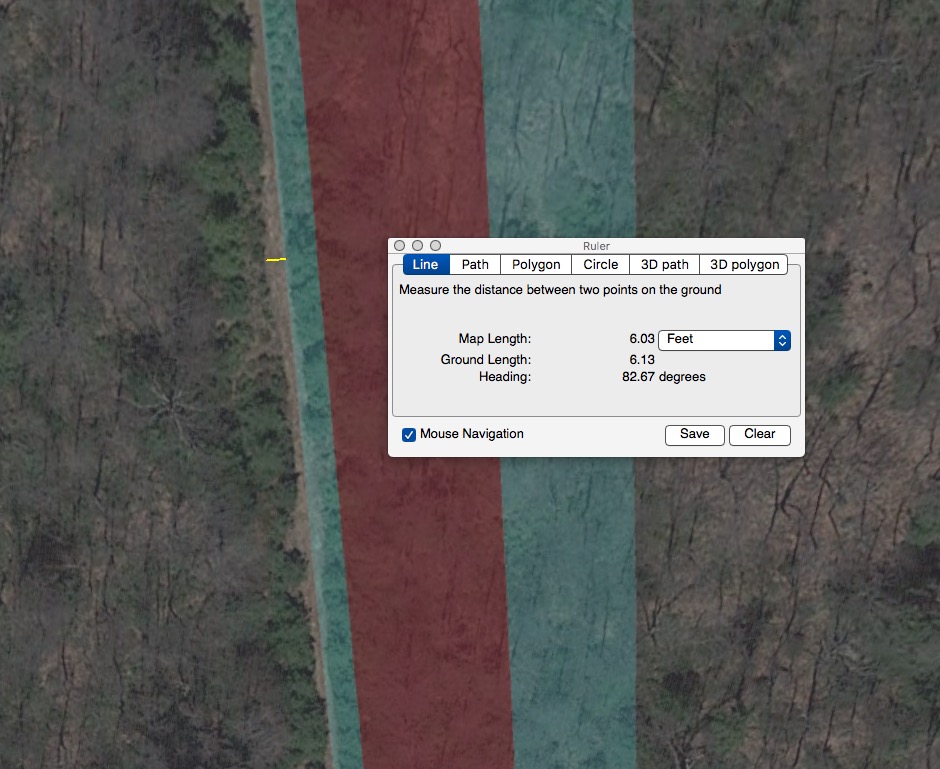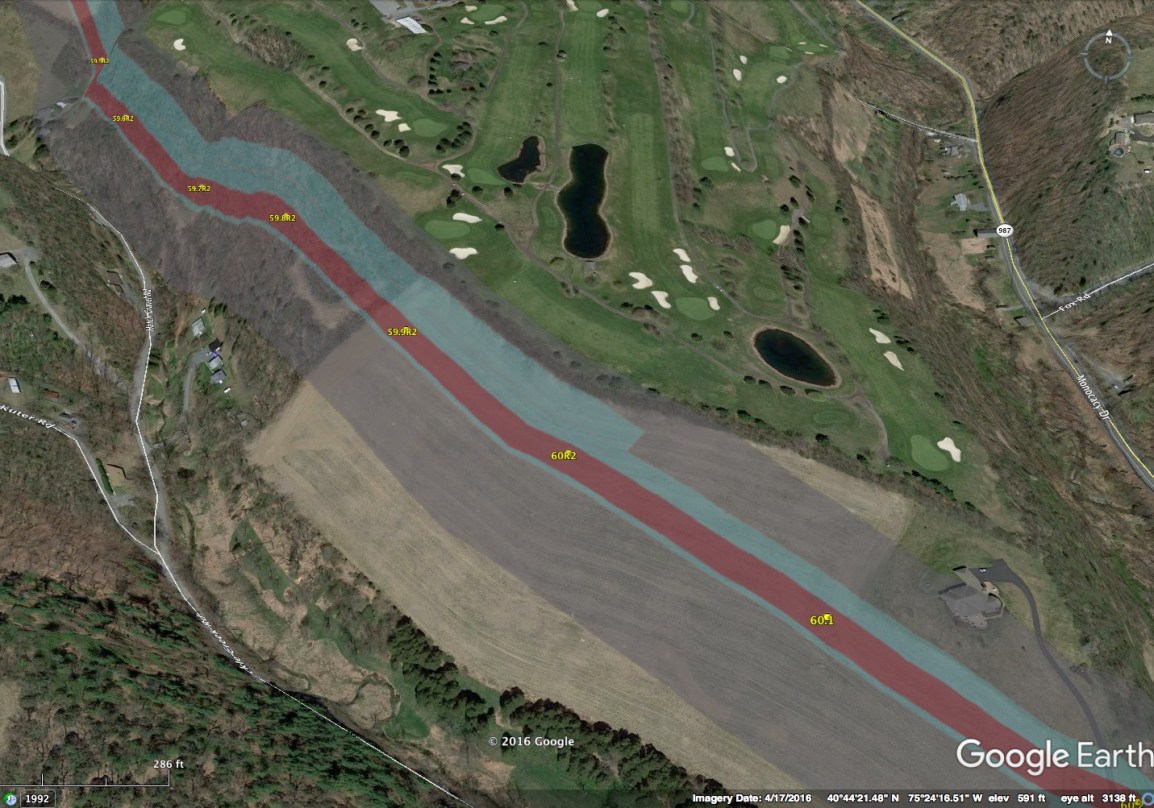This is part 18 of the 3D flyover video series of the PennEast routes. In this installment, we look at the route in Carbon County between milepost 40 and 30.
As always, the 400′ survey corridor is in smokey gray, the pipeline 50′ permanent easement line is in red, and the light blue areas are temporary construction zones. There is also a 100′ construction right of way not shown here.
I have also begun organizing these videos, they are all available under the “3D Flyover Videos” top navigation area.
In this area, PennEast claims once again they are “colocated” in an existing utility corridor, and hence they are limiting impact. We have a great example of that here.
For several miles, PennEast is co-located with what they call an “existing pipeline”. Here’s what that existing impact looks like:
That little trail there is the “co-location”. Google Earth says the cut is about 6 feet wide (the little yellow line across the trail). Yes, six feet.
Now here is the same spot with the PennEast plans overlaid.

Here we see the same little 6 foot trail. Then an extra 10′ temporary construction zone. Then 50′ permanent right of way, and 50′ more on the right of that.
So our little 6′ cut becomes a 116′ cut. That’s co-location for ya.
Are we maybe off our rockers? Did PennEast maybe do the right thing and actually not include this area in its co-location tables?
Ha, of course they did!
Here is PennEast’s submission to the Delaware River Basin Commission on co-location. The area we’re highlighting is the 7.3 mile stretch highlighted in the table above.
When someone tell’s you PennEast is all-good because “it’s co-located with existing utility rights of way”, show ’em this post and many of the other fly over video posts. Because in reality, it just ain’t so.








